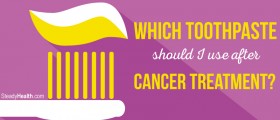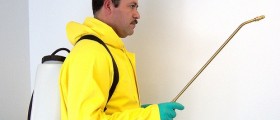
Fluoride is the reduced form of fluorine, to be more precise it is an ion which bonds to other elements. The term fluorides refers to fluorine containing compounds which may be organofluorine and inorganic in nature. Such compounds are sometimes severely toxic (e.g. sarin). On the other hand, some compounds containing this element are life-saving and used as pharmaceuticals. One of these is efavirenz. Also, while certain fluorine-containing compounds are practically inert there are many highly reactive one, capable of causing various damaging effects.
What is Fluoride Used for?
Modern technology is simply inconceivable without fluorides. For instance, the element is a significant part of hydrofluoric acid. The acid is obtained by treating fluoride minerals with sulfuric acid and is widely used as a precursor of many pharmaceuticals (e.g. fluoxetine). It is also used for PTFE (Teflon) production. Teflon coating frying pans makes them non-sticky. The material is heat resistant and is not water-wettable. Additionally there is a wide range of medical uses of PTFE. Namely, the material is an integral part of arterial grafts, catheters, sutures and is also used in reconstructive and cosmetic facial surgery.
Furthermore, there is sulfur hexafluoride, an inert and safe insulator. It is a component of electrical transformers. Atomic bombs and nuclear reactor fuels are simply unimaginable without separation of isotopes of uranium. This is perfectly achieved with the assistance of uranium hexafluoride.
One of the most familiar uses of fluoride is water fluoridation. Fluoride-containing compounds may be used topically or achieved their effects via systemic application. Both of the mentioned pathways are used for prevention of tooth decay (cavity). So, we can drink water that contains optimal amounts of fluoride or we may opt for a variety of products for maintaining oral hygiene, all of which contain fluoride as only one ingredient. Even the combination of the two approaches may provide with desirable amount of fluoride on a daily basis.
Today the fluoridation of water is considered one of the greatest achievements in the field of prevention. On the other hand, the subject of adding fluoride to drinking water remains controversy because not all experts would agree that it is the best way to prevent cavity and that perhaps it may be harmful to certain extent.
What Risks are Associated with Fluoride?
Because of great diversity of fluoride-containing compounds it is simply not possible to generalize the term of toxicity. Instead it is best to discuss toxicity of individual compounds, especially fluoride compounds people are frequently exposed to and which may, accidentally, trigger toxic effects. For example, sodium fluoride, the most commonly used soluble fluoride salt, is considered to be mildly toxic. However, it is blamed for accidental as well as suicidal deaths both associated with acute poisoning. Now, lethal dose of this compound in adults is 5-10 g (32-64 mg per kg body weight).
According to previously mentioned one needs to pay close attention when using products containing fluoride especially those that increase the level of the element in the body. If used as directed fluoride is practically safe and becomes hazardous once the dose is exceeded either accidentally or intendedly. Apart from being fully informed about use of fluoride-containing products, adults also need to keep such products out of reach of children. This particularly refers to children under the age of 6. In order to prevent accidental poisoning caused by fluoride parents are due to store fluoride supplements away from children. Furthermore, flavored toothpastes are not a good choice because young children are prone to swallow them. Also, the use of fluoridated toothpaste in young children is not always a good option because children are in general prone to swallowing toothpaste instead of spitting it out. Finally, if a parent opts for fluoridated toothpaste, the child should always be provided only with a pea-sized amount of toothpaste and the entire process of brushing teeth is performed under parent's surveillance. Repeated swallowing of toothpaste should be taken seriously and the previously fluoridated toothpaste should be replaced with fluoride-free one.
Apart from being lethally toxic, excess of fluoride may easily damage the tooth's enamel. The affected teeth show signs of discoloration that ranges from white specks/streaks to noticeable brown discoloration. These effects are commonly a consequence of fluorosis and predominantly occur in children under the age of 6. Fluorosis is more frequent among individuals who use well water. Teeth discoloration of this type can be easily dealt with by a well-experienced dentist.
All in all, the family dentist or pediatric dentist are great sources of information regarding dental care and the overall need for fluoride. If by any chance one accidentally ingests excessive amount of products that contain fluoride, symptoms of fluoride toxicity will soon occur in the form of nausea, vomiting, diarrhea and abdominal pain. Increased salivation and increased thirst may occur as well. This is a medical emergency which requires prompt treatment.

















Your thoughts on this
Loading...